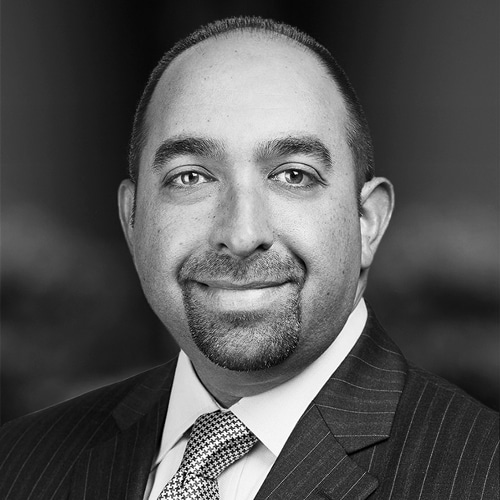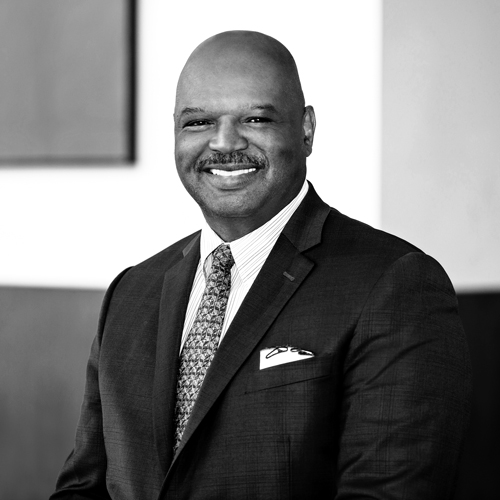It’s not every day that a business rooted in 125 years of experience gets the chance to completely redefine itself and its culture. But that’s exactly the opportunity that presented itself to Tim Richmond and his team in January 2013, when AbbVie—then the research-based pharmaceutical branch of Abbott Laboratories—spun off from its parent company and became a fully independent business. “It’s always been important for companies to define their culture and their strategy, but for us, the key catalyst was becoming a newly independent company,” says Richmond, senior vice president of human resources.
During AbbVie’s transition, Richmond found himself tasked with crafting a cohesive internal identity, as well as clear operating precepts for the biopharmaceutical developer and manufacturer’s employee base. If he could do that, Richmond says, AbbVie would be well on the path to success in its quest to develop therapies and treatments for serious medical issues around the world. “One of the things I’ve learned is people need clear strategies and clear intent. Ultimately, our mission is to deliver a consistent stream of innovative medicines that can address unmet health needs. That’s really our North Star,” says Richmond about AbbVie’s overarching vision. “My job, as head of HR, is to create the culture and deliver the talent that the business needs to be successful in that mission.”
With an eye on that polestar, Richmond’s team—along with the guiding hand of AbbVie’s executive leaders—forged a solid foundation for the company’s identity, calling it “The AbbVie Way.” At its core, “The AbbVie Way” is a three-pronged operational philosophy that weaves together what the business needs to do strategically, how the company will accomplish it, and why it’s in business in the first place. “Everything comes back to having a remarkable impact on our patients’ lives,” Richmond says. “If we can do that, the business will succeed.”
“Everything comes back to having a remarkable impact on our patients’ lives. If we can do that, the business will succeed.”
The how of “The AbbVie Way,” for Richmond and his human resources team was clear: articulate a talent philosophy that establishes explicit expectations for all employees; be transparent with those employees about what it takes to succeed at AbbVie; enhance employee culture by promoting diversity and inclusivity; and provide talent-development programs to employees at all levels to foster the creativity and advancement of future leaders within the company. “In my position, you see a whole range of employment experiences, people experiences, and leadership capabilities,” he says. “One of the great pleasures for me is to interact with all kinds of people around the world from different cultures, different backgrounds, different religions, different beliefs about work and life. The richness of that I find incredibly motivating.”
Richmond, the son of a small-business owner, observed firsthand the different stages and changes that a business goes through, as well as how to manage people in a professional setting. Eventually, he went on to study journalism and mass communications at the University of Minnesota, and labor and industrial relations as a graduate student at Michigan State University. “I keep finding that what I learned from my undergraduate degree has continued to help me throughout my career,” he says. “We’re constantly communicating with individuals, whether that’s orally or in a written fashion, whether it’s our own employees within the function or across the whole 28,000-plus employees of AbbVie. I think it’s part and parcel of being an effective leader.”
After working in a multitude of human resources positions at 3M, from manufacturing plants to sales offices, and in traditional business roles at corporate headquarters, Richmond was granted the opportunity to become the human resources manager of 3M’s Middle East operations unit based in Dubai. “I think it’s really important for HR professionals of today to have the experience of living and working outside of their home country,” Richmond says. “It was very different than what I had experienced in my life up to that point on so many different levels, but those differences are what made it so rewarding.” Those experiences all served to instill in Richmond an acute appreciation for, and sensitivity to, cultural diversity from a human resources perspective.
With this outlook, it comes as no surprise that AbbVie recently earned a perfect score on the Human Rights Campaign Foundation’s 2016 Corporate Equality Index. It also was recognized by DiversityInc as one of the “Top 50 Companies for Diversity in 2015,” and was named one of the “100 Best Companies for Working Mothers” by Working Mother magazine. Each year since its founding, AbbVie has also been ranked among the top ten businesses in the pharmaceutical industry by Fortune magazine’s yearly listing of the “World’s Most Admired Companies.”
On top of that, “The AbbVie Way” is working. In May 2013, Richmond’s team implemented an annual employee survey with thirteen different dimensions based on external benchmarks set by the world’s top companies in every industry. They asked staff worldwide to provide feedback on the company’s new vision for growth, as well as their levels of engagement in the company culture. “On twelve out of thirteen of those dimensions, we were at or above the best companies’ benchmarks,” Richmond says. “And all of the numbers are up, year after year. We really feel like the time and the effort has been rewarded by the feedback that our employees give us.”
Employee engagement scores are currently at 80 percent, which significantly exceeds the best companies’ benchmarks. Plus, 72 percent of AbbVie employees had a favorable response to the culture, which is up 5 percent from 2014 and 12 percent from 2013.
Even with earning such high-engagement scores, and despite the fact that AbbVie’s scores are consistently at or above the best companies’ benchmarks, Richmond and his leadership team at AbbVie always see room for improvement. “There’s really no finish line on engagement. There’s no finish line on the concept of leadership,” says Richmond, looking toward the future. “We ask ourselves, ‘What would a really great company do?’ And a lot of times, the clarity comes from answering that question.”

